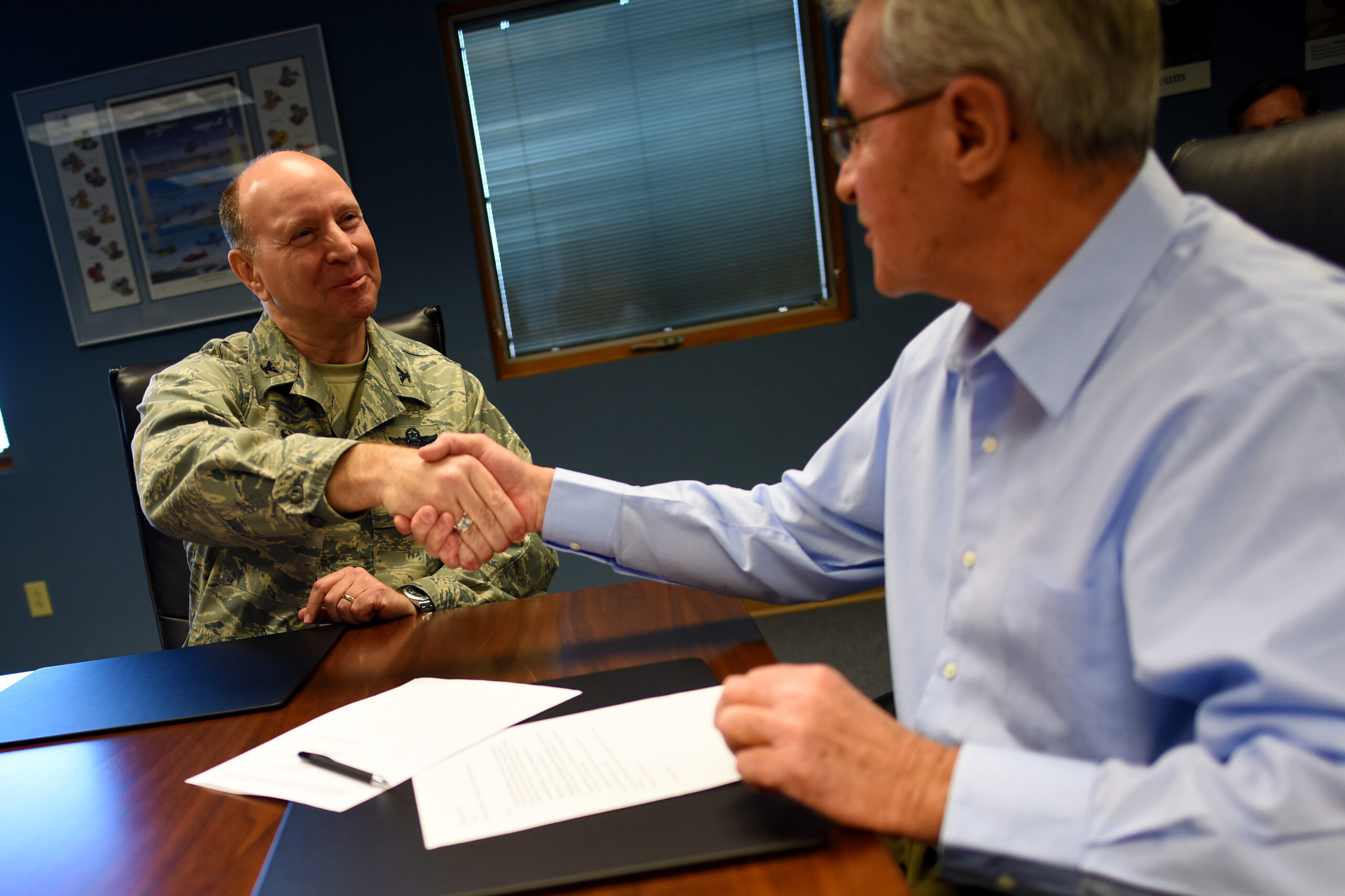Written by: Bob Bertsch
Effectively addressing the complex issues that affect military and civilian families requires cross-sector collaboration. In praising the citywide anti-hunger campaign Be Mighty Little Rock in Little Rock, AR, Mayor Frank Scott, Jr. said, “When entities come together to work strategically, community needs are met” (Webb, 2022).
Over the past year, we’ve seen and heard evidence supporting Mayor Scott’s statement over and over again. On the Practicing Connection podcast, we heard stories about collaborations that have improved the experience of military-connected kids in schools, built support for military families with LGBTQ+ youth, and helped to reduce food insecurity for military families. Each of these collaborations brought together people from multiple sectors inside and outside the installation gates. Each of them has highlighted the importance of an individual or small group dedicated to addressing an issue and weaving a collaboration network.
Dr. Ron Avi Astor talked with us about the importance of community connections in addressing issues military-connected kids were facing in schools in southern California in the podcast episode on building capacity for military-connected schools. Dr. Astor and his team helped school districts and individual schools build internal and community partnerships that reduced bullying, violence, and drug use. He said a holistic, community approach was key to those reductions, “I think if you change the mindset of the civilians who run the civilian structures and then look at capacity widely there, then it becomes a community approach and it changes it. We have this diversity group (military families) that we know that it’s there but we ignored it. Or we didn’t pay enough attention to. Once it becomes part of the community and what you do, you then add all those resources to it. It changes everything. I think that’s a big takeaway. It’s not just about the military families, it’s about the civilian families.”
In our episode about supporting military families with LGBTQ+ youth, Cathy Marcello of the Modern Military Association of America (MMAA) talked about the power of connecting military families with each other and how MMAA is partnering across sectors to build communities of support. “I think everybody knows that military spouse hive mind knowledge. If you ask, some military spouse is going to have an answer. This same is true when we focus down on the LGBTQ military community,” Cathy said. “In our online community you have unlimited access to all our communal knowledge of what’s a great base, what’s a good school, who’s a really supportive doctor in that town, how long is the wait list at that clinic, that kind of information.” MMAA is partnering with PFLAG to create a military community support group within PFLAG’s Community Connects program.
Partnerships at the organizational level can increase impact, but they often start with individual connections. When Arlette Eldridge Thompson, Health Promotion Coordinator for the 15th Medical Group for Joint Base Pearl Harbor-Hickam, wanted to do something about the food insecurity military families were experiencing, she connected with someone at the Hawaii Department of Health. In the podcast episode on Hawaii’s collaboration for military family food security, Arletta, Lorna Souza from the Hawaii Air National Guard Airman and Family Readiness Program, and Kina Mahi, Director of Advocacy and Strategic Partnerships for the Hawaii Foodbank shared how that initial connection led to the creation of the Food Security Hawaii Working Group, an amazing cross-sector collaboration to address food security issues military families are facing.
Monica Bassett, founder and CEO of Stronghold Food Pantry, shared a similar story about how a small food pantry run out of her garage led to a standalone, on-installation, nonprofit food bank at Ft. Leavenworth, KS. In our episode featuring Monica, she emphasized the importance of partnerships with military leadership, other nonprofits, and individuals who want to make a difference. For Monica, these partnerships began as she looked into the current food security climate in her community, “It always starts with, first, get a feel for your climate because we all want to help. Military spouses, we are in this community to do whatever we can for our neighbors… I started involving myself with outside community organizations. I started asking questions of executive directors, what’s your percentage, how many military families? Let me get a feel for how you run. That is always my first step for when people ask me, how do you start this, is you have to learn your climate.”
These and other stories we heard in 2023 are great examples of the cross-sector collaboration the Department of Defense (DoD) has called for to support military families. According to the DoD Instruction on Military Family Readiness (No. 1342.22, effective August 5, 2021), military family readiness should be supported through a system that maximizes access to a network of programs and services by linking informal and formal networks and promoting interagency collaboration and coordination within and among Federal and non-Federal entities. That work starts with individuals like Ron, Cathy, Arletta, Lorna, Kina, Monica, you and me. Here’s to a year of connection and collaboration in 2024.
Happy New Year!
References
Webb, K. (2022, April 29). Addressing Food Insecurity through Cross Sector Collaboration. National League of Cities. https://www.nlc.org/article/2022/04/29/addressing-food-insecurity-through-cross-sector-collaboration/















